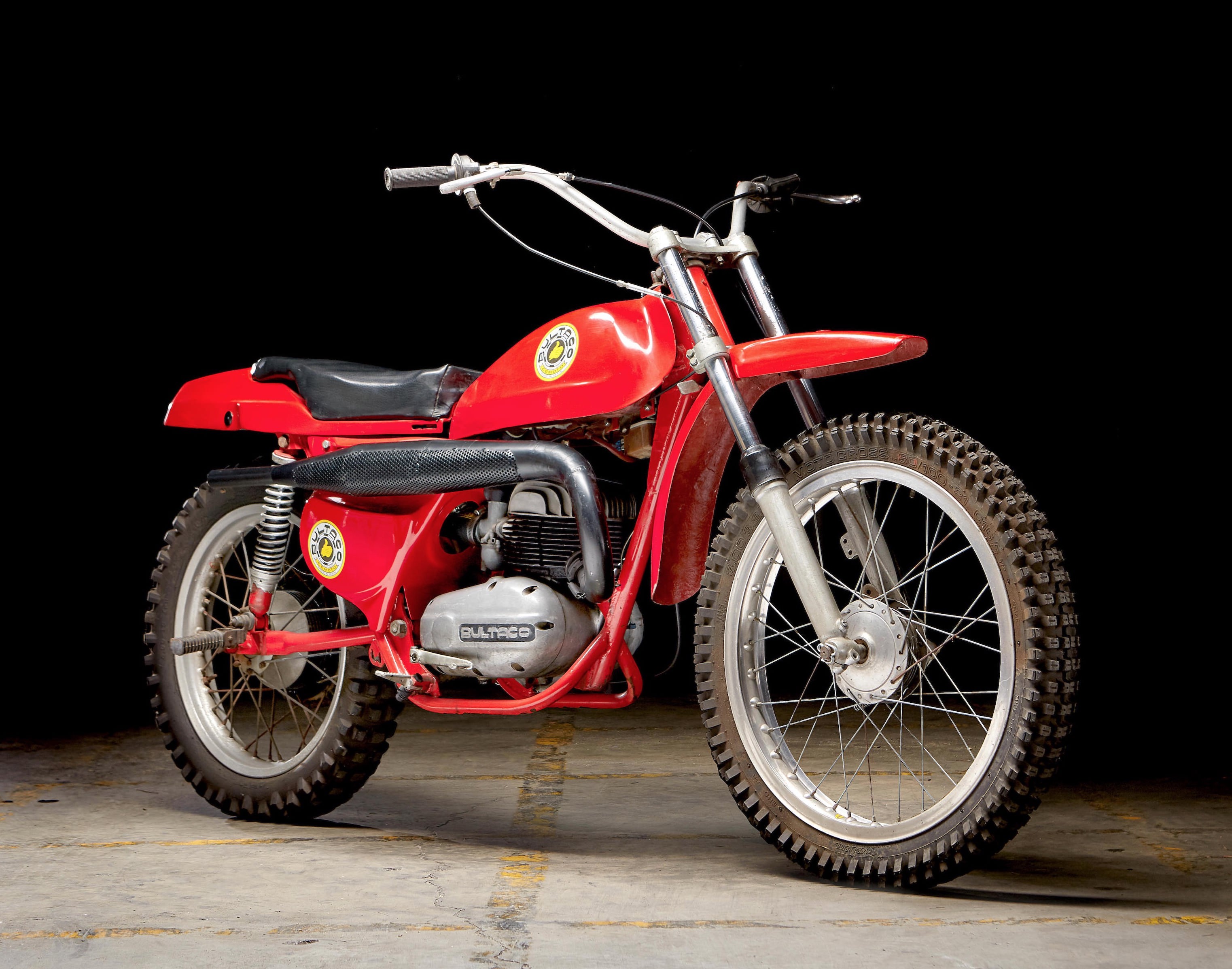
For a trip like this, you must be at your best.” How can you not respect and admire such a man? In a tribute written for Cycle News in 1998 following the death of Francisco Bultó at age 86, journalist and former Spanish road racing champion Dennis Noyes recounted that when the old man was on his deathbed and realized the end was near, he said, “Bring me my moustache wax and my best Bultaco shirt. Bultó was proud to see one of his grandsons, Sete Gibernau, compete successfully at the top international level in 250cc and 500cc Grand Prix races. Bultó’s nephew, Oriol Puig Bultó, was a leading motocross star who represented Spain in the Trophée des Nations, competed in the annual Six Days Trial, and later served as competition manager for Bultaco. He had 10 children, and one son, Juan Soler, became Spanish Trials champion and went on to work for Bultaco. Many of Bultó’s descendants inherited his love of motorcycles. Bultó was amateur champion of Catalonia in 1935 on a Velocette, and in 1948 he was Spanish national champion on a 250cc Montesa. From his teenage days he was a motorcycle enthusiast who also competed successfully as a rider.

A passion for motorcyclesīultó was not merely an industrialist.

In the years that followed, the basic engine architecture of that first road racer - an air-cooled, single-cylinder, piston-port 2-stroke - was carried over into winning road and offroad models in various displacements including road racers (the TSS), street bikes (the Metralla), offroad machines for trials (the Sherpa) and motocross (the Pursang). The following spring, in April 1959, the new race bikes proved themselves at their first outing at the Spanish GP at Montjuich Park in Barcelona, where the Bultacos took seven out of the top 10 finishing spots. By October 1958, they had completed the first running prototype.

Their trademark “thumbs up” logo arose from Bultó’s memories of seeing British race mechanics giving their riders the thumbs up sign as they flew past the pits, indicating “all’s well.” Bultaco’s initial goal was to design a 125cc competition motorcycle that could also serve as the basis for a line of production machines. To form the brand name Bultaco, the first four letters of Bultó’s last name were merged with the last three letters of his nickname, Paco. Bultó agreed, and in June 1958 he formed Compañía Española de Motores SA (CEMOTO) at his family’s country home on the outskirts of Barcelona. They were poised to leave Montesa, and encouraged Bultó to establish a new company to build sporting motorcycles. At the meal, the 16 Montesa employees gathered together echoed Bultó’s strong feelings about the racing program. Shortly thereafter, a group of Bultó’s former colleagues invited him to dinner. The company would not be swayed, so Bultó resigned and made plans to pursue his other business interests, which included textiles and a company making pistons and piston rings. As a board member, Bultó strongly disagreed with this decision - he believed racing “improved the breed” and boosted sales. The company chose to cut costs by withdrawing from racing, also eliminating its competitions department, as Moto Guzzi, Gilera and Mondial had already done. The Spanish economy hit a slump in 1958, adding to the financial strain Montesa was already experiencing following its recent move to new, larger premises.

Bultaco’s beginningsįrancisco Xavier Bultó, popularly known as Paco Bultó, cofounded the Montesa motorcycle company in 1944 and helped develop the company’s 125cc race bikes that were so successful in the 1950s. That’s a pity, because as the lovely Metralla on these pages proves, Bultaco also made exceptional street bikes. The United States was Bultaco’s largest market in the 1960s, but beyond the offroad world of trials and motocross, the Spanish company was not well-known and never attained more than cult status here.


 0 kommentar(er)
0 kommentar(er)
